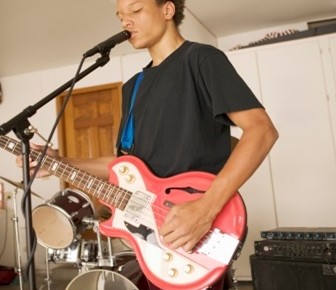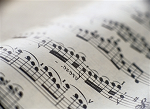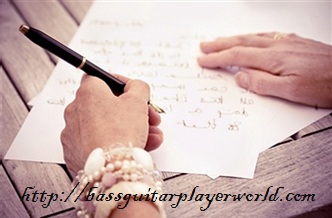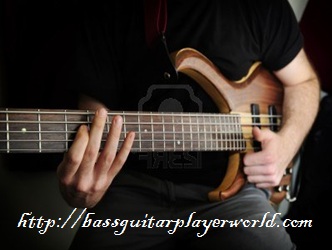Double Stops Applications You Can Start Using
 Technically speaking a double stop on a stringed instrument is when two fingers stop (prevent from ringing) two separate strings and then pluck them simultaneously. It was back in 1627 when baroque violinist Carlo Farina invented the double stop.
Technically speaking a double stop on a stringed instrument is when two fingers stop (prevent from ringing) two separate strings and then pluck them simultaneously. It was back in 1627 when baroque violinist Carlo Farina invented the double stop.
Playing double stops on bow instruments requires rather precise technique since bowing more than one string at the same time is very difficult since the bridge of most of these instruments is curved – bowing non-adjacent string is right impossible. The case of plucked instruments is much simpler. For example, in the case of the bass guitar playing double stops is almost trivial once the bassist had a little bit of practice.
Later on – already in the twentieth century – Chuck Berry popularized the usage of double stops on the guitar and in turn on the bass guitar, showing how the usage of this simple technique can yield quite awesome rock and roll and rock riffs.
Basic Applications For Double Stops
Playing double stops on the bass guitar is relatively simple; you just have to shove off a little from your accomplished usage of single-string plucking. The most basic usage of double stops involves playing the root note and third, the root note and the fifth or the third and the fifth of a scale simultaneously.
These two-note chords are also sometimes referred to as “power chords” thanks to their crisp, definite sound. Even though the combination of notes mentioned previously is the most common, there are no rules as to what a double stop might consist of: you can even play adjacent notes, but most people will agree that an F and an F# played simultaneously is rather dissonant.
In the example below you can see how you can create double stops inside a single key both inside the minor and the major chord. The three measures contain, in that order, double stops in F, G and A.

Download the .gtp file for the lesson ( Right click and Save As… )
If you do not have GuitarPro yet, download a copy of Guitar Pro instantly here…
Taking Them a Bit More Seriously
The previous paragraph showed you how what it means to play a double stop. However, what we are interested in is – as always: application. How can we make music using double stops and how can we combine double stops with different melodic and rhythmical patterns that we already know?
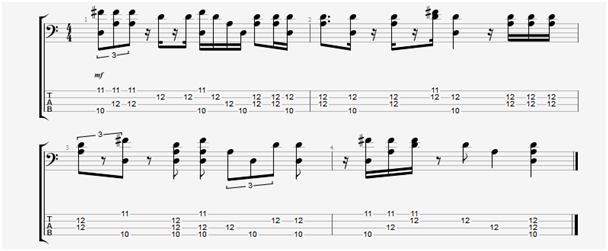
Download the .gtp file for the lesson ( Right click and Save As… )
The example below showcases a surprisingly broad arsenal of musical elements. While the whole sequence (it can even be called a basic bass guitar solo) is in D minor, there are a few interesting rhythmical and melodic licks included.
First of all, as you can see, apart from using the boring combination of only sixteenths and eighths, I have also included triplets (even broken triplets), quarter notes and off-beat sixteenths. Reproducing this succession will test your rhythmical skills; that is for sure – do not ever try to sight read it!
Since our topic is the double stop, we should also take a look at the melodic questions raised by the example. As you can see, all of the above-mentioned combinations are used in the double stops. Also single-string plucking is used in some situations (where more than one note would make the succession bloated) and you can also see two examples of triads using triple stops.
See Huge Improvements In Your Playing Immediately
If you are serious about learning to play the bass, check out JamPlay. They offer the best online instructional content to help you achieve short term and long term goals. With lessons taught by some of the most famous bassists in the world and new content being added on a weekly basis, you can learn whatever you want at your own convenience!
Jamplay is absolutely fantastic and is highly recommended. Check them out today!
Related Articles
Comments are closed.

